
The ketogenic or keto diet is a very high-fat, very low-carbohydrate, moderate protein diet which has been shown to improve certain symptoms of Parkinson’s in several small studies1,2,3. If not well-formulated the keto diet can lack fibre. Not consuming enough fibre can lead to or exacerbate constipation. Since constipation is a common non-motor symptom of Parkinson’s that can affect quality of life and impact the effectiveness of levodopa, it is super important to ensure you are consuming an adequate amount each day.
Just like all dietary regimes, there is no one-size fits all approach with the keto diet. The amount of carbohydrate required to reach ketosis on a keto diet will vary from person to person. In addition, it is unclear what the ideal ratio of fat to carbohydrate would be most appropriate for people with Parkinson’s. Therefore, the following information should be used as a guide only. For personalised one-on-one advice you should consult a Dietitian. Please note all figures quoted are estimates only.
Fibre and the keto diet – Breakfast example 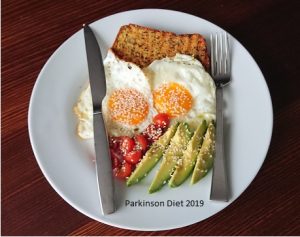
Ingredients: toasted Protein bread drizzled with extra virgin olive oil, tomato, avocado, sesames seeds and eggs fried in extra virgin olive oil.
This meal provides 3.4 grams of carbohydrate and 10.9 grams of fibre.
Fibre and the keto diet – Lunch example
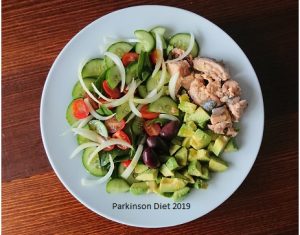
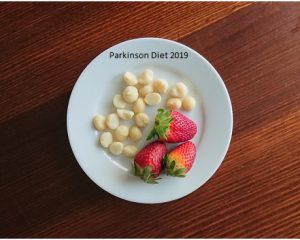
Ingredients: Wild Alaskan salmon, avocado, olives, tomato, cucumber, onion and spinach leaves with extra virgin olive oil dressing. Macadamia nuts and strawberries.
This meal provides 18.2 grams of carbohydrate and 13.7 grams of fibre.
Fibre and the keto diet – Dinner example
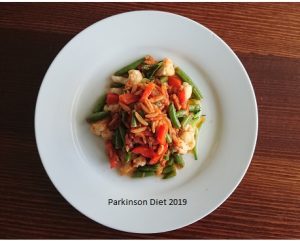
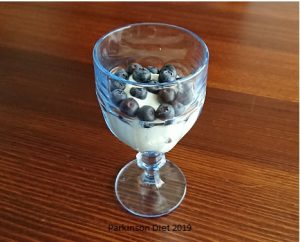 Ingredients: Slivered almonds, zucchini noodles, Passata, garlic, onion, green beans, red capsicum and cauliflower, cooked in coconut oil. Blueberries and natural yoghurt.
Ingredients: Slivered almonds, zucchini noodles, Passata, garlic, onion, green beans, red capsicum and cauliflower, cooked in coconut oil. Blueberries and natural yoghurt.
This meal provides 15.7 grams of carbohydrate and 10.1 grams of fibre.
Altogether these meals provide a total of just over 2000 calories, 37.3 grams of carbohydrate and 34.7 grams of fibre. The macro-nutrient breakdown as a percent of total calories is 78% fat, 7% carbohydrate and 15% protein.
Final thoughts
If you do decide to start the keto diet, it is essential that you work with your Doctor and consult a Dietitian for personalised advice and guidance. Remember also, to drink an adequate amount of water throughout the day.
Before you go…..
Be sure to check out Parkinson Diet’s Amazon Storefront which contains links to products that you might find helpful. If you buy something through a link on this page, Parkinson Diet may earn a small commission to help with ongoing website running costs. Thank you.
Sources
-
Vanitallie TB, Nonas C, Di Rocco A, Boyar K, Hyams K, Heymsfield SB. Treatment of Parkinson disease with diet-induced hyperketonemia: a feasibility study. Neurology. 2005 Feb 22;64(4):728-30
-
Phillips, Matthew C L et al. “Low-fat versus ketogenic diet in Parkinson’s disease: A pilot randomized controlled trial.” Movement disorders : official journal of the Movement Disorder Society vol. 33,8 (2018): 1306-1314.
-
Krikorian R, Shidler MD, Summer SS, Sullivan PG, Duker AP, Isaacson RS, Espay AJ, available online 6 August 2019, Nutritional ketosis for mild cognitive impairment in Parkinson’s disease: A controlled pilot trial, Clinical Parkinsonism & Related Disorders.
Parkinson Diet – Terms & conditions / Privacy policy
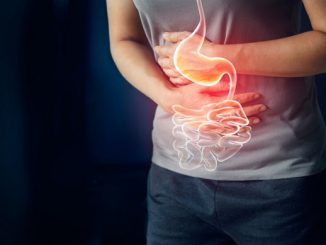


its not high fat.
fat is max
protein is a goal
carb is a limit
stop calling it high fat.
Hi Doug, thanks for your comment.
The ketogenic diet is high-fat with moderate protein (adequate protein). Check out the studies discussed in the following blog post and you can see the amount of fat provided to study participants https://parkinsondiet.com/can-the-ketogenic-diet-help-parkinsons/